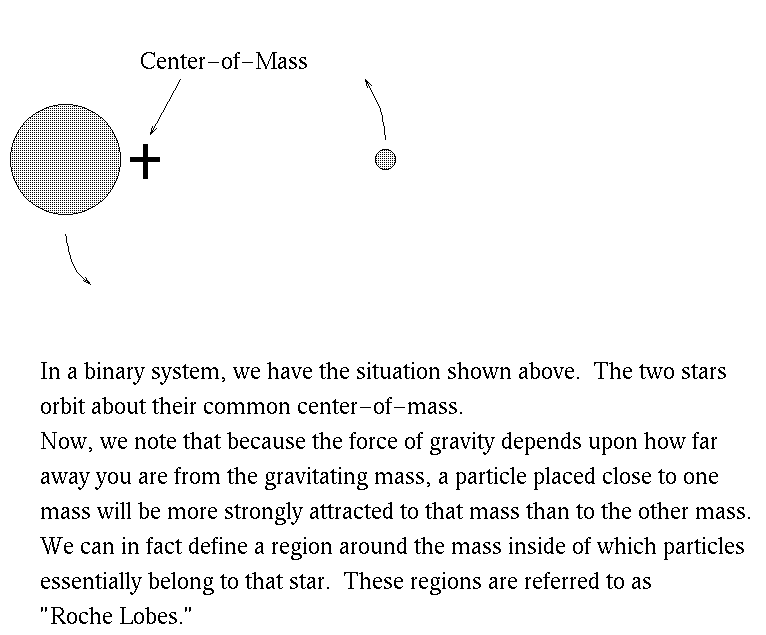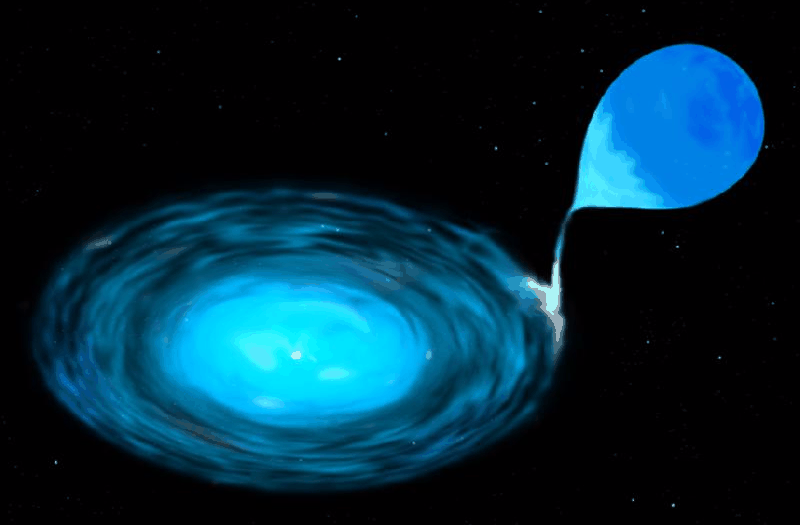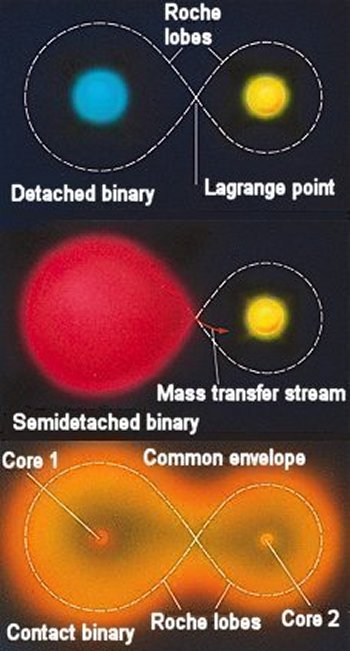Cataclysmic Variables


The systems must have short orbital periods (hours to a few days) or else the stars will be too far apart to exchange significant amounts of mass. Let's define some things.


|
What happens in close binary systems, depends upon the secondary (the less massive star). There may be detached, semi-detached, and contact systems depending upon whether the secondary star fills its Roche lobe. CV's are semi-detached systems. The companion fills its Roche lobe and transfers material to the white dwarf. |
Comments:
===> nuclear burning efficiency is higher

CVs are short orbital period (hours to days) binary star systems composed of a white dwarf and a low mass main seqeunce star (in general, sometimes the companion star is a red evolved star). As their name implies, cataclysmic variables (CV's) are sites for cataclysmic events. However, the events are not so cataclysmic as to destroy the binary star systems (in general). The events lead to rapid increases in the luminosities of the systems. There are three main types of cataclcysmic variables (CV's), Dwarf Novae, Recurrent Novae, and Classical Novae. Also, many CVs are strong sources of x-ray emission, and CVs may be the progenitors of Type I Supernovas.
The systems must have short orbital periods (hours to a few days) or else the stars will be too far apart to exchange significant amounts of mass. Let's define some things.


|
What happens in close binary systems, depends upon the secondary (the less massive star). There may be detached, semi-detached, and contact systems depending upon whether the secondary star fills its Roche lobe. CVs are semi-detached systems. The companion fills its Roche lobe and transfers material to the white dwarf. |
The material which flows onto the white dwarf simply piles up on the surface of the white dwarf. The material is rich in hydrogen since it comes from the envelope of the companion star. This is a key point, because white dwarfs being the ashes of nuclear burning have no nuclear fuel left. The companion replenishes its fuel supply.
Depending upon whether the mass flow (accretion) is high or low, different outcomes may result.
For slow accretion rates, the material as it piles up can lose its energy gained as it fell onto the white dwarf. The material remains cold and reaches high densities. The scenario is then:
For the fast accretion rate, the material does not have time to lose its energy it gained as it fell onto the white dwarf. The material thus increases in temperature and pressure strongly as it accretes onto the white dwarf.
Comments:
===> nuclear burning efficiency is higher